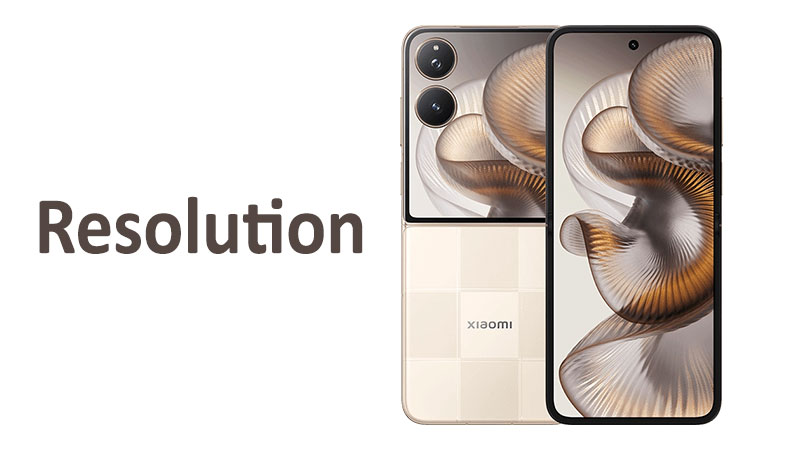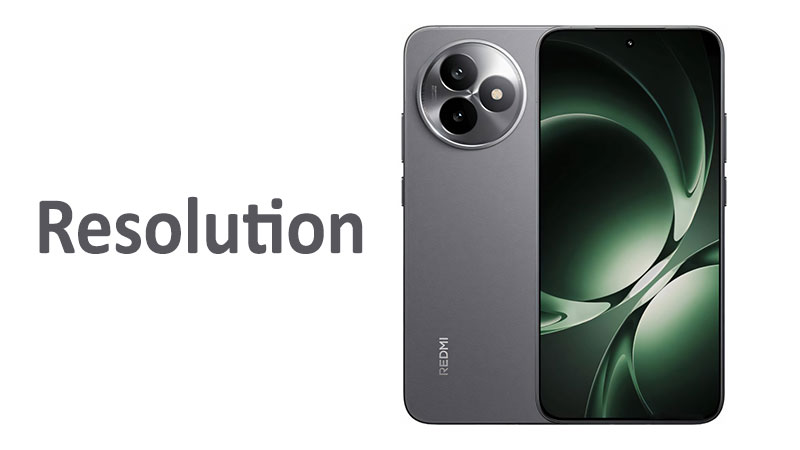The Apple iPhone 15 display is the central element of the user experience. Its specifications, resolution, and overall quality determine how well you interact with your device every day. A high-quality display is no longer a luxury. It is a fundamental requirement for modern applications, gaming, and media consumption. The iPhone 15 introduces significant upgrades to its screen technology. These improvements elevate the viewing experience beyond previous standard models. This comprehensive review will detail the Super Retina XDR OLED technology. We will explore its resolution, peak brightness, and durability features. Understanding these elements helps potential buyers appreciate the display’s true value.
Technical Specifications: The iPhone 15 Display Engine
The display on the iPhone 15 is built on several key technological pillars. These specifications work together to deliver exceptional visual performance. This section breaks down the core components that define the screen’s quality.
Super Retina XDR OLED Technology
The iPhone 15 uses a Super Retina XDR OLED display. OLED stands for Organic Light-Emitting Diode. Unlike traditional LCD screens, OLED pixels generate their own light. This crucial difference allows for perfect blacks. When a pixel is displaying black, it is completely turned off. This results in an infinite contrast ratio.
Super Retina XDR is Apple’s branding for its high-dynamic-range OLED technology. It supports both HDR10 and Dolby Vision standards. This means the display can reproduce a wider range of colors and brightness levels. Consequently, content viewed on the screen appears more realistic and vibrant. Movies and high-quality photographs benefit immensely from this technology.
Size, Resolution, and Pixel Density
The iPhone 15 features a 6.1-inch display size. This is a compact and ergonomic size for one-handed use. The screen occupies approximately 86.4% of the phone’s front surface. This high screen-to-body ratio indicates very thin bezels.
The display boasts a high resolution of 1179 x 2556 pixels. This resolution is slightly non-standard due to the display’s unique 19.5:9 aspect ratio. The resolution yields a sharp pixel density of approximately 461 pixels per inch (ppi). This high pixel density means individual pixels are virtually indistinguishable to the human eye. This results in incredibly sharp text, images, and video content.
Brightness Performance: High Brightness Mode (HBM) and Peak
Brightness is a key performance metric for outdoor visibility. The iPhone 15 screen has seen a significant brightness upgrade. It operates at a typical brightness that ensures comfortable indoor viewing. However, its high-dynamic-range (HDR) capabilities truly distinguish it.
The display reaches 1000 nits in High Brightness Mode (HBM). This HBM activates automatically in direct sunlight. It makes the screen easily legible even under bright conditions. Furthermore, the display achieves a massive 2000 nits peak brightness when viewing HDR content. This peak brightness capability is double that of the previous generation. It delivers spectacular highlights in compatible HDR movies and photos. This is a game-changer for outdoor use.
Display Quality and Features Review
Beyond the core specifications, several features contribute to the overall quality and user interaction with the iPhone 15 display. These elements define its excellence in color accuracy and protection.
Dynamic Island Integration
A key change for the iPhone 15 display is the adoption of the Dynamic Island. This feature replaces the traditional notch found on previous models. The Dynamic Island is a pill-shaped area at the top of the screen. It seamlessly blends hardware and software.
The Dynamic Island intelligently expands and contracts to show notifications, alerts, and ongoing background activities. For example, it displays face ID authentication, incoming calls, or music playback status. This interactive element adds a unique layer of utility to the display. It transforms a hardware constraint into a powerful software feature.
Color Accuracy and High Dynamic Range (HDR)
Apple is widely regarded for its industry-leading color calibration. The iPhone 15 display maintains this reputation. It delivers extremely accurate colors that align with professional standards. This is important for photographers and content creators who need true color representation.
Support for HDR10 and Dolby Vision is essential for premium media. These standards ensure that compatible movies and TV shows display stunning contrast. They reproduce deep shadows and brilliant highlights simultaneously. The high 2000 nits peak brightness is specifically designed to maximize this HDR effect. Watching high-dynamic-range content on the iPhone 15 is a visually engaging experience.
Protection and Durability: Ceramic Shield
The iPhone 15 display is protected by Apple’s Ceramic Shield glass. Apple co-developed this material with Corning. Ceramic Shield is infused with nano-ceramic crystals. These crystals are harder than most metals. This makes the glass significantly tougher than standard smartphone glass.
Apple claims the Ceramic Shield offers superior drop performance. This means the screen is much less likely to shatter upon impact. However, this material focuses primarily on drop resistance. It is important to note that scratch resistance remains similar to other high-end screen protectors. Buyers should still consider a screen protector for ultimate defense against minor scuffs and scratches.
Specialized Comparisons and Competitive Analysis
Comparing the iPhone 15 display with its predecessor and rivals highlights the significance of its upgrades. These comparisons show where the iPhone 15 excels and where it faces competition.
iPhone 15 vs. iPhone 14 Display: A Major Leap
The iPhone 15 display represents a far more substantial upgrade compared to the iPhone 14 display. The iPhone 14 retained the traditional notch. The iPhone 15, on the other hand, gains the Dynamic Island. This is the most visible change.
More importantly, the brightness has doubled. The iPhone 14 offered a much lower peak brightness. The iPhone 15’s 2000 nits peak brightness drastically improves outdoor visibility and HDR viewing. This brightness increase is perhaps the single most important technical enhancement. It makes the viewing experience better in almost every environment. The display is otherwise similar in size and resolution density.
iPhone 15 vs. Android Competitors (Samsung/Google)
The iPhone 15 competes directly with flagship Android displays from companies like Samsung and Google. These competitors also use high-end OLED technology. Many Android phones, however, offer a 120Hz refresh rate. This feature is commonly known as ProMotion on Apple’s high-end Pro models.
The standard iPhone 15 display maintains a 60Hz refresh rate. This is a noticeable disadvantage for serious mobile gamers and users accustomed to the smoother scrolling of 120Hz screens. However, the iPhone 15 compensates with industry-leading color accuracy and calibration. The peak brightness is also highly competitive, often matching or exceeding rivals in real-world testing. The choice here comes down to refresh rate versus Apple’s superior color consistency.
The 60Hz Refresh Rate Trade-off
The decision to keep the standard iPhone 15 at 60Hz is a controversial one. A higher refresh rate, like 120Hz, updates the screen twice as often. This makes motion, such as scrolling and animations, appear much smoother.
Apple reserves its ProMotion 120Hz technology for the more expensive iPhone 15 Pro models. This is a segmentation strategy. It encourages users who prioritize gaming or visual fluidity to upgrade to the Pro line. For the average user, 60Hz is perfectly adequate. However, buyers should be aware that the lack of 120Hz is the display’s most significant technical compromise compared to the Pro model.
Pros and Cons of the iPhone 15 Display
The iPhone 15 screen technology offers compelling advantages but also has a few key drawbacks. Analyzing these helps buyers set accurate expectations.
Display Advantages (Pros)
The iPhone 15 display shines in several crucial areas.
- Extreme Brightness: The 2000 nits peak brightness is exceptional. It ensures excellent outdoor visibility and impactful HDR viewing.
- Dynamic Island: This innovative feature offers a clever, dynamic way to interact with background tasks and notifications.
- Outstanding Color Quality: The Super Retina XDR OLED panel provides perfect blacks and industry-leading color accuracy.
- Robust Protection: The Ceramic Shield glass offers top-tier drop resistance, contributing to the device’s longevity.
- High Resolution Density: At 461 ppi, the screen delivers incredibly sharp and detailed visuals.
Display Disadvantages (Cons)
A few factors prevent the display from achieving absolute perfection.
- Limited Refresh Rate: The 60Hz refresh rate means scrolling and gaming are not as smooth as on 120Hz competitors or the iPhone 15 Pro.
- No Always-On Display: The standard iPhone 15 model typically lacks the Always-On display feature. This feature is often reserved for the Pro models.
- Bezel Consistency: While thin, the bezels are often slightly thicker than those found on the Pro models. This is a minor aesthetic difference.
Key Considerations for Buyers
Prospective iPhone 15 buyers should keep these practical points in mind when evaluating the display.
- Brightness is a Huge Upgrade: Focus on the improved brightness. It fundamentally changes the experience of using the phone outdoors.
- Test the Refresh Rate: If you are upgrading from an Android phone with a 120Hz screen, try to test the iPhone 15 first. You may notice the difference in scrolling smoothness.
- Dynamic Island Value: Evaluate how much you will use the Dynamic Island. It is a utility feature that adds functionality to the top of the screen.
- Screen Protection is Good, But Not Perfect: Ceramic Shield is strong against drops. However, a quality screen protector is still advisable to prevent hairline scratches from daily use.
Deep Dive into Core Technologies
To fully appreciate the iPhone 15 display, we must revisit the technologies that enable its high performance and cinematic quality. These are complex systems working in unison.
Understanding HDR and Tone Mapping
The display’s ability to support HDR10 and Dolby Vision is complex. The phone uses advanced tone mapping to process these high-dynamic-range signals. Tone mapping adjusts the brightness and contrast of every pixel in real-time. This ensures that the wide range of colors and light levels captured in the video are accurately displayed.
Dolby Vision, in particular, uses dynamic metadata. This means the tone mapping is optimized on a scene-by-scene or even frame-by-frame basis. This level of precision maximizes the visual impact. The increased 2000 nits peak brightness makes this effect especially noticeable on the iPhone 15. The bright parts of the image look spectacular without washing out the darker details.
The Significance of 461 ppi Density
The pixel density of 461 ppi is well above the threshold known as the Retina display standard. Apple coined this term to describe a screen density where the human eye cannot discern individual pixels at a typical viewing distance.
At 461 ppi, all visual elements are rendered with extreme fidelity. Text is crisp, photos are detailed, and complex graphics look clean. This high density makes the display excellent for reading fine print or performing detailed image editing. It provides a highly comfortable viewing experience for extended periods.
Conclusion
The Apple iPhone 15 display is a visually stunning and technologically advanced component. It combines the deep contrast of Super Retina XDR OLED with significantly enhanced brightness. The introduction of the Dynamic Island and the formidable 2000 nits peak brightness are game-changing upgrades from the previous generation. These features noticeably improve usability in bright outdoor environments and elevate HDR content viewing.
While the exclusion of the 120Hz ProMotion refresh rate remains a key differentiator from the Pro models, the display offers exceptional quality for the price tier. Buyers benefit from outstanding color accuracy, superb sharpness at 461 ppi, and the added durability of Ceramic Shield. For the vast majority of users, the iPhone 15 display provides an immersive, bright, and vibrant window into their digital world. It is a strong selling point for the device.
FAQ
What type of display technology does the iPhone 15 use?
The iPhone 15 uses a Super Retina XDR OLED display, which provides perfect blacks and exceptional contrast.
Does the iPhone 15 have a 120Hz refresh rate?
No, the standard iPhone 15 display uses a 60Hz refresh rate. Apple reserves the 120Hz ProMotion technology for the Pro models.
What is the peak brightness of the iPhone 15 display?
The display can reach up to 2000 nits peak brightness when viewing HDR content. It reaches 1000 nits in High Brightness Mode (HBM) outdoors.
What is the pixel density of the iPhone 15 screen?
The iPhone 15 display has a pixel density of approximately 461 pixels per inch (ppi), making the visuals very sharp.
What is the display protected by?
The screen is protected by Apple’s Ceramic Shield glass, which offers enhanced resistance against drops.



